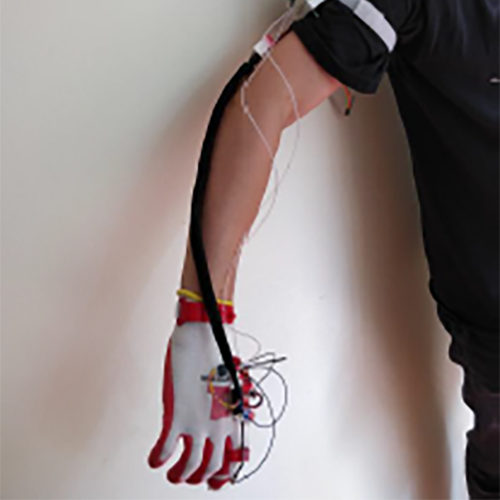The purpose of this project is to develop a force feedback system together with a virtual reality module to stimulate a patient for rehabilitating the shoulder. The force feedback and virtual reality are implemented to make the rehabilitation more fun. The force feedback system is designed to limit the movement of the patient, this way it feels as if the patient can pick up a real object.
The force feedback will be delivered by a linear actuator in combination with Bowden tubes. A cable goes through the Bowden tubes to glove. On the tip of the glove is a 3D printed tip with holes to attach the stretch sensor (used for determining the position of the finger) and the cable for the feedback. The Bowden tubes on the glove are being held in place by five 3D printed designs. The glove is being held in place by a wrist bracket. The Bowden tubes are attached to this wrist bracket and connect to the servomotors. A rotational sensor is connected to the back of the hand. This sensor measures how far the hand has rotated.
Project description
Unity has a functioning game, that allows object to be picked up and moved. The movement is dependent on the data provided by the sensors. To make rehabilitation attractive, an interesting environment has to be created. We chose to make an kids bedroom so we can use simple object to pick up, like a ball and blocks.
The 3D designed models were successfully printed with a 3D printer. The 3D printed models are sturdy. A problem occurs when the 3D printed models are mounted on a glove. The flexibility of the glove allows the models to move further than desired. A glove made from a less stretchable material would allow for better transfer of force to the hand. The downside of a less flexible glove, is the ease of getting the glove on and off. This might cause problems for rehabilitating people.
The communication between the Arduino and Unity works. It is possible to send and receive data, with a maximum of 255 bytes at a time. The amount of data is dependent on the amount of sensors. The data is sent every 16ms. This is when Unity causes an update of the game.
During this BeCreative project, the team worked together with Philips Research.
